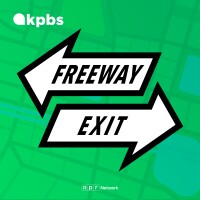
Freeways are not free. We pay for them in all kinds of ways — with our tax dollars, our time, our environment and our health. While freeways have enabled huge amounts of economic growth, they've also caused displacement and division. Learn the forgotten history of our urban freeway network, and how decades after that network was finished, some communities are still working to heal the wounds that freeways left behind. As climate change threatens to wreak havoc on our cities, freeways are not just a part of the problem. They can also be part of the solution.

Freeway Exit
Freeways are not free. We pay for them in all kinds of ways — with our tax dollars, our time, our environment and our health. While freeways have enabled huge amounts of economic growth, they've also caused displacement and division. Learn the forgotten history of our urban freeway network, and how decades after that network was finished, some communities are still working to heal the wounds that freeways left behind. As climate change threatens to wreak havoc on our cities, freeways are not just a part of the problem. They can also be part of the solution.
Hosted by Andrew Bowen
Episodes
-
As the CEO of San Diego County's transportation planning agency, SANDAG, Hasan Ikhrata has done more than anyone else to shake up the conversation around our freeways. Ikhrata has pushed his own board of directors to let go of long standing plans to widen certain freeways. And he's jump-started a debate over charging drivers by the mile to fund a more sustainable system.
-
-
A devastating earthquake forces San Francisco to consider the radical notion of tearing a freeway down.
-
A community works to heal the wounds caused by a freeway that divided them a generation ago.
-
In San Diego, a group of activists organize to stop a highway from destroying their predominantly Black and Latino neighborhood.
-
The American freeway is born during a time of boundless optimism for the automobile … how did we not see the dark side?
-
As San Diego struggles to meet its climate goals, a radical idea emerges — shut down part of a freeway.
-
Freeways are not free. We pay for them in all kinds of ways — with our tax dollars, our time, our environment and our health. While freeways have enabled huge amounts of economic growth, they've also caused displacement and division. Learn the forgotten history of our urban freeway network, and how decades after that network was finished, some communities are still working to heal the wounds that freeways left behind. As climate change threatens to wreak havoc on our cities, freeways are not just a part of the problem. They can also be part of the solution.
-
The event, which will feature music, art and a fashion show, is meant to help residents reimagine the space as a neighborhood.
-
The latest budget proposal out of Sacramento would cut the program to a third of its original size.
-
The funds could help plan and build affordable housing, parks and sustainable transportation infrastructure, in communities that were devastated by freeway construction.
-
Expanding the capacity of San Diego County's freeway network would increase driving — and could make it impossible to achieve state and local climate goals.
-
Kiosks and public bathrooms built over the freeway were supposed to help reconnect the community. They've never been put to use.
-
At the center of Southcrest Trails Neighborhood Park sits a public art project inspired by the community's decades-long battle to stop a freeway.
-
Few San Diegans today remember the fight over Highway 252, which would have torn through the Southcrest neighborhood.
-
State Route 15 was one of the last freeways to get built in San Diego. See what City Heights looked like before it was built.
-
Climate activists protested the widening, saying it would not fix congestion but rather put more cars on the road, pushing the city's goal of net zero emissions further from reach.
Share Your Thoughts on Freeway Exit
We value your feedback! Tell us what you liked about the podcast and what you would like to hear more of. What questions do you still have about freeways? What should we look into next?
Submit your questions and feedback here or leave us a voicemail at (619) 452-0228.

_























